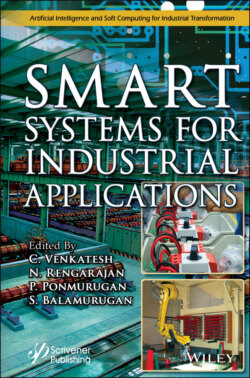Читать книгу Smart Systems for Industrial Applications - Группа авторов - Страница 36
1.6 AI-Driven Augmented and Virtual Reality–Based Communication Technologies and Healthcare Applications
ОглавлениеTechnology is getting better, smaller, and faster. Virtual reality (VR) is a highly interactive, computer-based multimedia environment in which the user becomes the participant in a computer-generated world. VR and augmented reality (AR) are having an impact on most aspects of modern life. AR is an integration of the real world and the virtual world, with the aim of providing additional information about something in the real world with information displayed in the virtual world. In recent times, the scope of AR applications has expanded to include innovation for the domains of Research, Science, Medicine, Telecommunications, etc. For instance, a person could look at a painting or a machine in the real world, hold up their smartphones or tablet in front of the painting or machine, and see on the screen the painting or machine with additional useful information, thus augmenting reality. It is becoming ever more in demand in every segment of the economy, particularly in healthcare. With the technological advancements in AI, their demand is also increasing progressively in healthcare applications. Not just in healthcare, VR is helping organizations in different sectors to train their workforce as a good communicator. In reference to Healthcare and Medical Clinics, simulations are developed with a pre-defined script and one or more avatars with whom the player can interact. This article describes the impact of VR and AR in communication technologies and healthcare applications.
Table 1.5 Role of AI-driven IoT in healthcare services.
| Source | Subject matter | Applications | Related performance measures |
| [26] | Digital transformation | Automated management and monitoring chronic conditions | Sensor devices usage increases up to 23.8% Compound Annual Growth Rate (CAGR) |
| [27] | Hierarchical computing Architecture for Healthcare IoT | Machine learning–based data analyticsClosed-loop autonomous system | Employed in arrhythmia detection for patients suffering from cardiovascular diseasesAchieves 93.6 accuracy using k-fold cross validation method. |
| [28] | Regulation of wireless devices operation | Dynamic and interoperable communication framework | Enhances the decision-making capabilities of wearable sensors.Optimizes device lifetime, storage capacity and handling multiple communication channel |
| [29] | Security parameters | Secure-Anonymous Biometric-based User Authentication Scheme (SAB-UAS) | Achieves delay up to 0.02 seconds in a network with 160 sensor nodes.Also achieves throughput of 2500bps with a same network |
